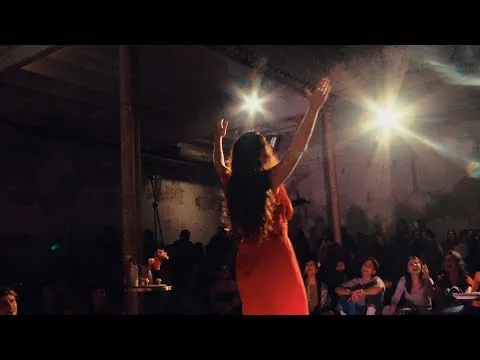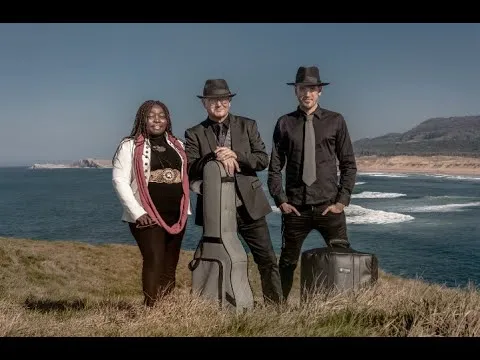
Saludos a toda la comunidad de Humanitas y al equipo de INLEO. En esta publicación me sumo a una de las iniciativas de Temas para cada día, mes de septiembre: la música y las emociones.


La música no expresa este o aquel gozo, esta o aquella tristeza, este o aquel dolor, esta o aquella exaltación, sino el gozo, la tristeza, el dolor y la exaltación en sí mismos, por así decirlo, en abstracto, en su esencia y sin ningún accesorio
Schopenhauer
La música fue un gran misterio para Darwin, ¿cuál es su ventaja evolutiva? En un universo donde sobrevive el más apto, ¿Cuál es su utilidad? Un misterio que nos hace vibrar, nos calma o nos desinhibe, bailamos, reímos, lloramos, nos estremece,…, ¿Quien no se ha emocionado con una melodía o con un ritmo?
Incluso Calvin, un gato con el que compartí piso durante más de una década, dependiendo del disco que sonara en ese momento reaccionaba de las formas más diversas. Recuerdo especialmente como se quedaba como una estatua, con los ojos en alerta y las orejas quietas, apuntando hacia el cielo, cada vez que escuchaba a Sun Ra and his arkestra. Como si algo extraordinario estuviera a punto de ocurrir o estuviera ocurriendo.
No cabe ninguna duda sobre la siguiente afirmación: la música es capaz de emocionarnos. Para Schopenhauer era/es la expresión más pura de la “voluntad”, de la energía universal. Comienza aquí una divagación desde el punto de vista del oyente, no del ejecutante.

La melodía:
Sobre la melodía, esa sucesión de notas, y su relación con la emoción ya comenté algo en otra publicación. Tomé como base de mis especulaciones el libro “Los neandertales cantaban rap: los orígenes de la música y el lenguaje (2007), de Steven Mithen, catedrático de arqueología de la Universidad de Reading (Inglaterra). Hoy de nuevo, vuelvo a recurrir a este trabajo para volver a plantear toda una serie de conjeturas como ya hice anteriormente:
Steven Mithen (2005) sugiere que la música es una vuelta al pasado. Una imitación del habla adulta que escuchamos durante nuestra infancia. De este asuntó ya comenté algo en otra publicación:
Esta forma particular de hablar es conocida por los científicos como “lengua adaptada a los niños”. Hablamos a los niños en tonos más altos, con más variedad tonal, las frases son más breves, las pausas y las palabras se subrayan de forma exagerada. Pruebas de laboratorio han demostrado que los niños más pequeños no entienden las palabras que les dedicamos, sólo oyen melodías e interpretan nuestros mensajes por su melodía.
Releído el texto de nuevo, he de admitir que esta idea de regresión a la infancia no la sugiere el autor. Es sólo una ocurrencia que surgió durante la lectura del libro. Nada más (y nada menos).
Ay! Un codazo me ha dado mi amigo el derviche, advirtiéndome de un punto olvidado antes de comenzar con su asunto.
No me olvido. Apunta Steven Mithen que el pilar del lenguaje es el canto. Que la humanidad cantó antes de poder hablar. A este proto-lenguaje lo llamó "Hmmmm", un sistema de vocalizaciones musicales cargadas de emoción y evocadoras de ella:
el sistema de comunicación "Hmmmm" expresaba y suscitaba estados emocionales y estructuraba la interacción scocial.
Si hasta este instante habíamos evocado a la infancia, ahora sumamos un elemento más para comprender la relación entre música y emoción. Uno de los pilares del lenguaje humano es el canto, la voz de la emoción. ¿Quién puede, por tanto, explicar la naturaleza humana sin la música?

El ritmo:
Los patrones rítmicos me llevan en un viaje imaginario al útero materno, al océano. En el inicio, flotamos durante meses rodeados de sonidos y vibraciones, entre estos sonidos se encuentra un ritmo: el corazón de la madre. Un fondo pulsante que nos acompaña durante toda esta aventura que es el nacer.
En paralelo a este fondo rítmico, se sincronizan los latidos del bebé y los maternos. La evidencia de este fenómeno durante el parto parece ser bastante sólida.
En los meses de gestación, un tiempo sin tiempo para la criatura que va creciendo, la evidencia sugiere que el sistema cardíaco fetal, posee la capacidad de ajustar su tasa de activación en respuesta a la estimulación externa, es decir, de la madre:
la conciencia especial de las madres embarazadas hacia el feto también puede reflejarse en la interacción feto-materna de la actividad cardíaca.
Tras el nacimiento, el contacto piel con piel entre el bebé y la figura materna prolonga ese estado de unidad vivido durante meses entre la madre y el bebé:
,
El MMC [método madre canguro] además de favorecer la regulación de la temperatura corporal, y lograr el alcance de un adecuado grado de oxigenación, estabiliza la frecuencia cardiaca del recién nacido prematuro, esto se debe a que su corazón se sincroniza con el de la madre para regular los latidos cardiacos.
Estefani carolina Salome Olivera
Datos que me llevan a especular sobre la vía transcendental de la música como una vuelta a la experiencia intrauterina. Sabemos de la capacidad de determinados ritmos para transportarnos a experiencias en las que la la conciencia, el raciocinio, se encuentra ausente. Momentos en los cuales se abre el portal a experiencias emotivas y sentimentales antes escondidas.
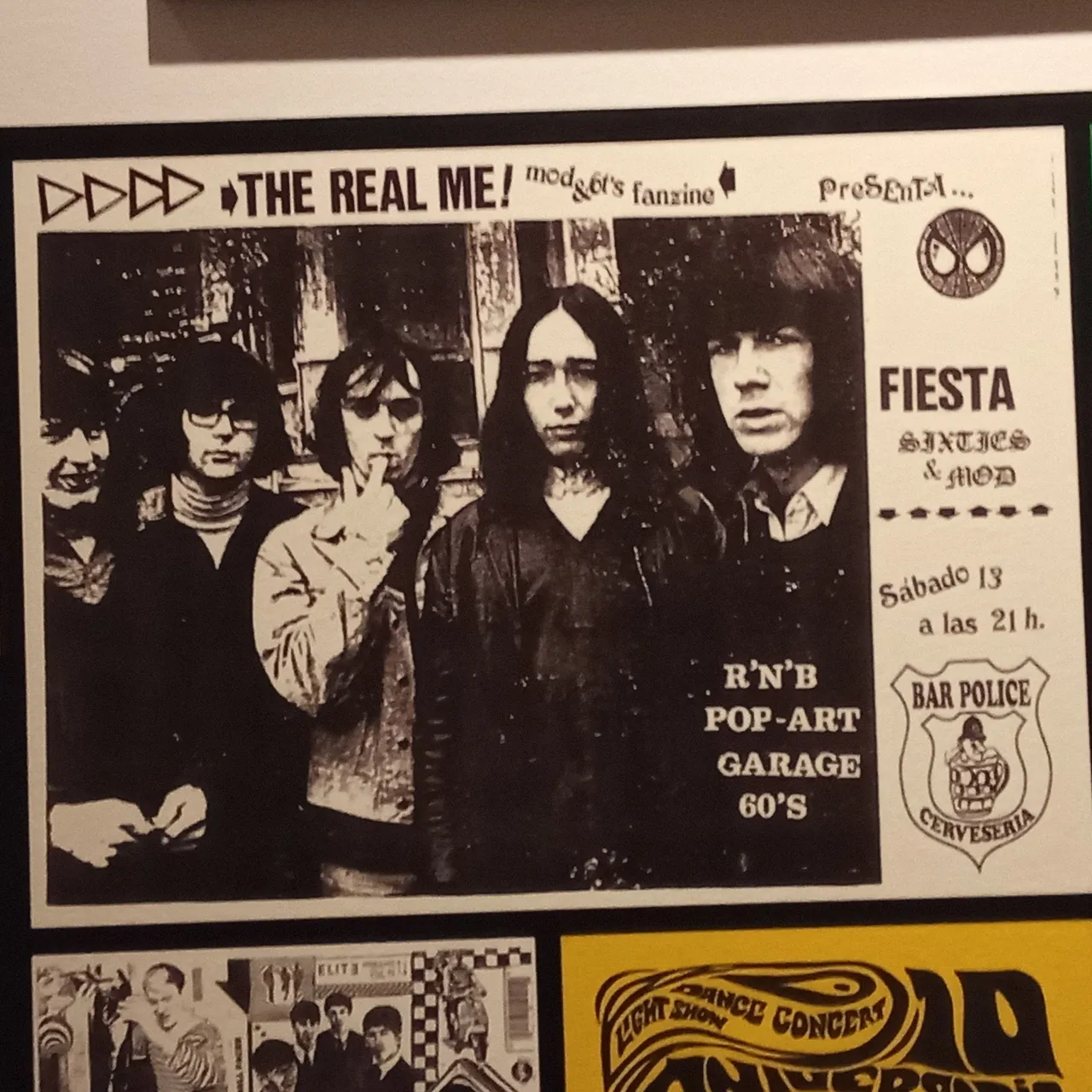

La infancia y la juventud
Nuestra relación con la música, con el lenguaje de las emociones, no termina con el alumbramiento. Nuestra conexión continúa durante toda la vida, tomando cada composición un significado particular para cada oyente.
Destacan dos etapas dentro de nuestro ciclo vital, la infancia y la adolescencia. Años en los que las composiciones que escuchamos se van cargando de nuevos significados. El Flamenco me une a mis padres, a mis raíces. Esto no es un fenómeno extraño:
Somos en buena parte la prolongación de nuestro pasado, el resultado de un recuerdo.
Pio Baroja.
Y llegamos a la adolescencia.
Por estas fechas todavía sigue abierta la exposición “Chupas y Parkas” en el Museo Arqueológico de Madrid. La visité hace un par de meses y ahí se encontraba mi juventud, junto a un triste cántaro de barro de 2000 años de antigüedad.
Fui parte del movimiento Mod en Madrid, en esos años 80,s en los que las llamadas tribus urbanas poblaban los barrios madrileños. La música fue el centro de la vida de millares de jóvenes madrileños, y en torno a la música gravitaba la rebeldía, las primeras fiestas, los primeros amores…, cómo no emocionarme recordando esos tiempos locos, esas canciones….

Muchas gracias por la visita

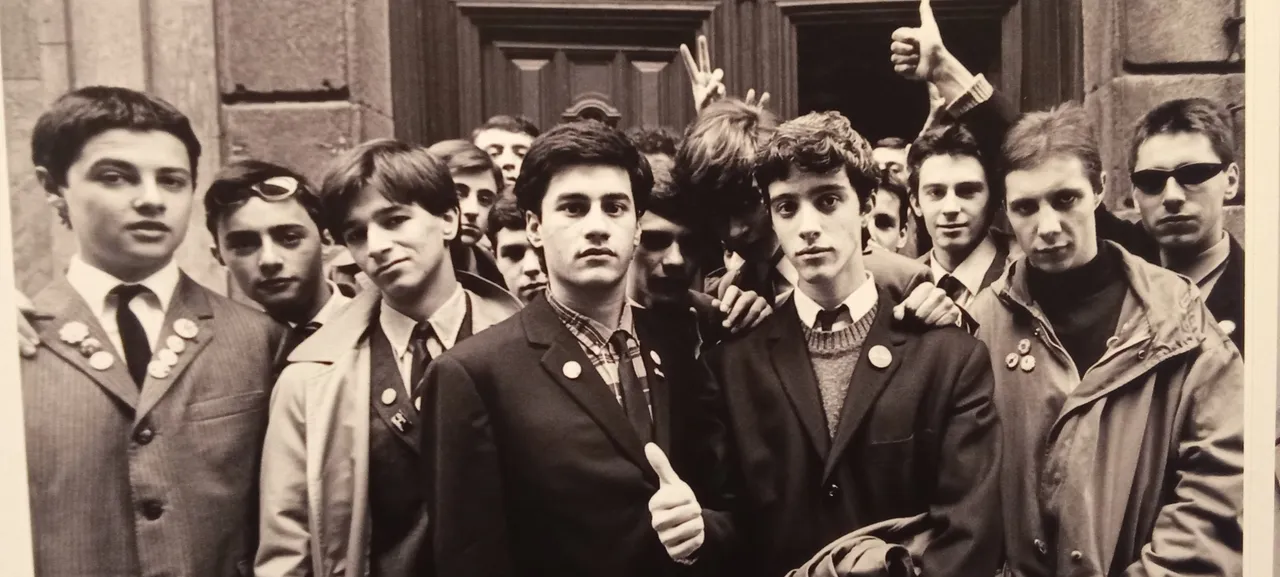

Translated to English
Greetings to the entire Humanitas community and the INLEO team. In this publication I join one of the initiatives of Themes for each day, month of September: music and emotions.


Music does not express this or that joy, this or that sadness, this or that pain, this or that exaltation, but joy, sadness, pain and exaltation in themselves, so to speak, in the abstract, in their essence and without any accessory.
Schopenhauer
Music was a great mystery to Darwin, what is its evolutionary advantage? In a universe where the fittest survive, what is its utility? A mystery that makes us vibrate, calms us or disinhibits us, we dance, we laugh, we cry, we shudder,..., who has not been moved by a melody or a rhythm?
Even Calvin, a cat with whom I shared an apartment for more than a decade, depending on the record that was playing at the time, reacted in the most diverse ways. I especially remember how he would stand like a statue, eyes alert and ears still, pointing to the sky, every time he listened to Sun Ra and his arkestra. As if something extraordinary was about to happen or was happening.
There is no doubt about the following statement: music is capable of moving us. For Schopenhauer it was/is the purest expression of “will”, of universal energy. Here begins a digression from the point of view of the listener, not the performer.

The melody:
About melody, that succession of notes, and its relationship with emotion, I already commented something in another publication. I took as a basis for my speculations the book “Neanderthals sang rap: the origins of music and language (2007), Steven Mithen, professor of archaeology at the University of Reading (England). Today again, I turn to this work to raise again a whole series of conjectures as I did before:
Steven Mithen (2005) suggests that music is a throwback to the past. An imitation of the adult speech we heard during our childhood. I have already commented on this issue in another publication:
This particular way of speaking is known by scientists as “child-friendly language”. We speak to children in higher tones, with more tonal variety, sentences are shorter, pauses and words are emphasized in an exaggerated way. Laboratory tests have shown that the youngest children do not understand the words we dedicate to them, they only hear melodies and interpret our messages by their melody.
Re-reading the text again, I have to admit that this idea of regression to childhood is not suggested by the author. It is just an occurrence that came up during the reading of the book. Nothing more (and nothing less)
Oh, a nudge from my friend the dervish, warning me of a forgotten point before starting on his subject.
I do not forget. Steven Mithen points out that the pillar of language is song. That humankind sang before it could speak. He called this proto-language “Hmmmm”, a system of musical vocalizations charged with and evocative of emotion:
the “Hmmmm” communication system expressed and elicited emotional states and structured social interaction.
If up to this moment we had evoked childhood, now we add one more element to understand the relationship between music and emotion. One of the pillars of human language is song, the voice of emotion. Who can, therefore, explain human nature without music?

The rhythm:
The rhythmic patterns take me on an imaginary journey to the mother's womb, to the ocean. In the beginning, we float for months surrounded by sounds and vibrations, among these sounds is a rhythm: the mother's heart. A pulsating background that accompanies us throughout this adventure that is being born.
 In parallel to this rhythmic background, the baby's heartbeat and the maternal heartbeat are synchronized. The evidence for this phenomenon during labor appears to be quite strong.
In the months of gestation, a timeless time for the growing infant, evidence suggests that the fetal cardiac system possesses the ability to adjust its activation rate in response to external stimulation, i.e., from the mother:
The special awareness of pregnant mothers towards the fetus may also be reflected in the feto-maternal interaction of cardiac activity.
After birth, skin-to-skin contact between the baby and the mother figure prolongs the state of unity experienced for months between mother and baby:
,
The KMC [mother kangaroo method] in addition to favoring the regulation of body temperature and achieving an adequate degree of oxygenation, stabilizes the heart rate of the premature newborn, because the heart is synchronized with the mother's heart to regulate the heartbeat.
Estefani carolina Salome Olivera
Data that lead me to speculate on the transcendental way of music as a return to the intrauterine experience. There is ample evidence of the capacity of certain rhythms to bring us back to that intrauterine experience, in which consciousness and reasoning are absent. Moments in which the portal to previously hidden emotional and sentimental experiences is opened.


Childhood and youth
Our relationship with music, with the language of emotions, does not end with childbirth. Our connection continues throughout life, with each composition taking on a particular meaning for each listener.
Two stages within our life cycle stand out, childhood and adolescence. Years in which the compositions we listen to are loaded with new meanings. Flamenco links me to my parents, to my roots. This is not a strange phenomenon:
We are in large part the prolongation of our past, the result of a memory.
Pio Baroja.
And we reached adolescence.
At this time the exhibition “Chupas y Parkas” is still open at the Archaeological Museum of Madrid. I visited it a couple of months ago and there I found my youth, next to a sad 2000 year old clay pitcher.
I was part of the Mod movement in Madrid, in those 80's when the so-called urban tribes populated the neighborhoods of Madrid. Music was the center of the lives of thousands of young people in Madrid, and around music gravitated the rebellion, the first parties, the first loves..., how not to get excited remembering those crazy times, those songs....

Thank you very much for your visit



Banner edited with Canva pro and cropped with ezgif.com.
Avatar created with IA Ideogram.

Texto traducido al inglés desde mi idioma nativo el español con DeepL.
Text translated from my native language Spanish to English with DeepL.
Separator/Separador:
Portada creada con GIMP a partir de dos fotos de mi propiedad tomadas con mi Xiaomi 14
Cover created with GIMP from two photos of my property taken with my Xiaomi 14
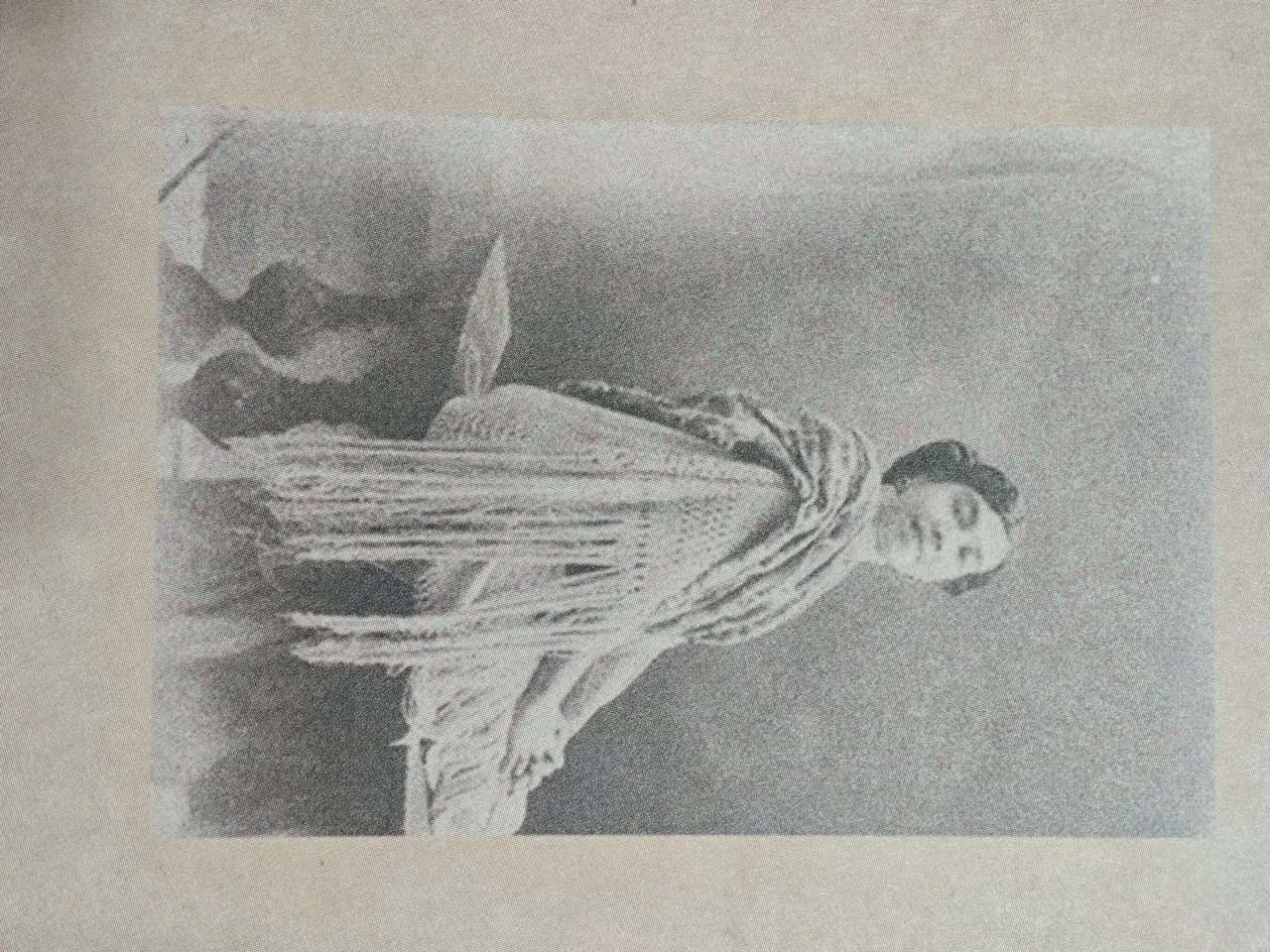 |  |
|---|
Todas las fotografías son de mi propiedad tomadas con mi Xiaomi Redmi A2 en la exposición "Chupas y Parkas".
All photographs are my own taken with my Xiaomi Redmi A2 at the “Chupas y Parkas” exhibition.
Todos los videos son de youtube.
All videos are from youtube.
